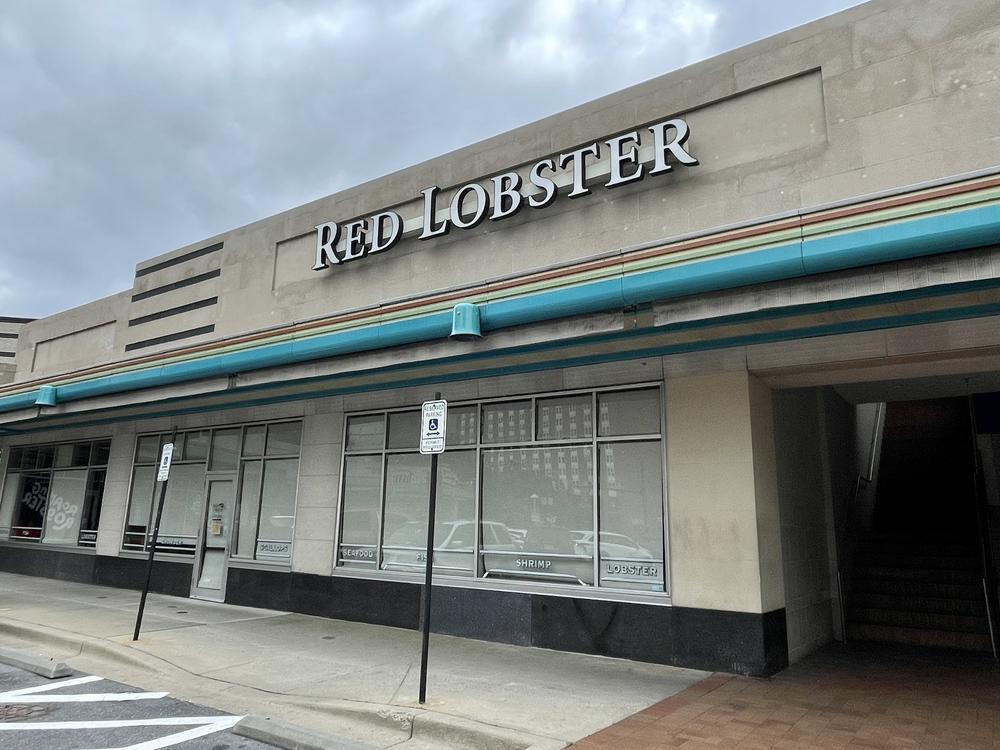Section Branding
Header Content
Red Lobster files for bankruptcy after missteps including all-you-can-eat shrimp
Primary Content
Red Lobster, America's largest seafood chain known for its shrimp and Cheddar Bay biscuits, has filed for bankruptcy.
Its seafood restaurants are in hot water after a series of bad choices by a parade of executives, including an ill-fated promotion for all-you-can-eat-shrimp starting at $20.
Almost 580 locations in the U.S. and Canada are expected to stay open through the process, employing about 36,000 workers. Last week, dozens of other Red Lobster locations closed abruptly. Their entire contents — including freezers, ovens, booths and lobster tanks — have already been auctioned off.
The fire sale was a precursor to a long-expected bankruptcy filing, in which Red Lobster plans to sell "substantially all of its assets." Since March, the chain has been run by CEO Jonathan Tibus, known as a corporate-restructuring expert.
Red Lobster's troubles include "a difficult macroeconomic environment, a bloated and underperforming restaurant footprint, failed or ill-advised strategic initiatives, and increased competition within the restaurant industry," Tibus wrote in court documents.
Brand crisis meets ownership crises
Red Lobster, now the largest seafood chain, did not get cooked just recently. It has struggled for a decade as diners have pulled away from large casual-dining chains.
In that world, Red Lobster was one of the originals. It started in 1968 and exploded through the 1980s and 1990s, hosting generations of Americans for celebrations and dates — with many cracking their very first lobsters at its tables.
In recent years, marked by rising inflation, Red Lobster has been losing out on both ends: to fresher, nicer, more local restaurants; and to the rising tide of cheaper, quicker spots, like Shake Shack or Surfside Taco.
And during this cultural shift, Red Lobster's finances have floundered.
A private equity firm bought the chain ten years ago from Darden Restaurants, which owns rivals Olive Garden and LongHorn Steakhouse. The firm, Golden Gate Capital, funded the deal partly by selling Red Lobster's real estate.
That meant the chain had to start paying rent. That's now a major financial factor in Red Lobster's bankruptcy filing, which asks the court to reject 108 leases, letting the company abandon those locations.
Since 2020, Red Lobster has been run by its largest shareholder: Thai Union Group, a seafood supplier also behind the Chicken of the Sea brand. And the bankruptcy filing lays much blame on Thai Union and ex-CEO Paul Kenny.
After massive financial losses during the pandemic, followed by increases in the costs of food and wages, Thai Union pursued extensive cost-cutting at Red Lobster. The chain was run by a conveyor belt of executives; it had no CEO for a year.
The bankruptcy filing alleges that Thai Union interfered with daily operations and even pushed out two rival suppliers of breaded shrimp, securing a costlier exclusive deal for itself.
All-you-can-eat shrimp fiasco
Then came a reboot idea that turned into a jumbo disaster: Ultimate Endless Shrimp. Red Lobster took its classic promotion and made it permanent, with prices originally starting at $20.
Thai Union later cited this as the main cause of its $11 million loss that quarter. The goal was to get more people in the door, which did happen. But many diners then stayed for hours, picking at plate after plate of shrimp dishes and — critically — buying little else.
Thai Union CEO Thiraphong Chansiri later said the ordeal left him scarred.
"Other people stop eating beef, I'm going to stop eating lobster," he told investors.
In January, Thai Union washed its hands of Red Lobster. The owners said they would essentially abandon their stake in the chain, setting the restaurant company on a path to bankruptcy.
In this week's Chapter 11 filing, Red Lobster says it has a prearranged bid, known as a "stalking horse" bid, from its lenders to buy out the chain, unless it receives a higher rival bid.

